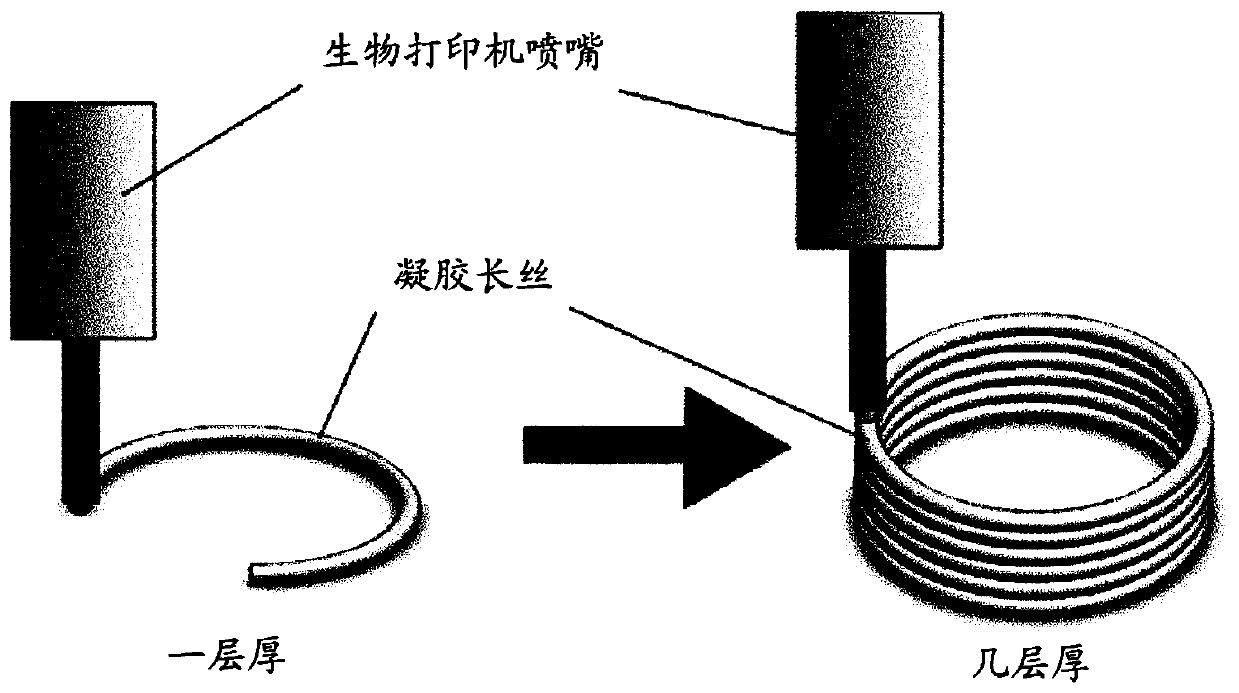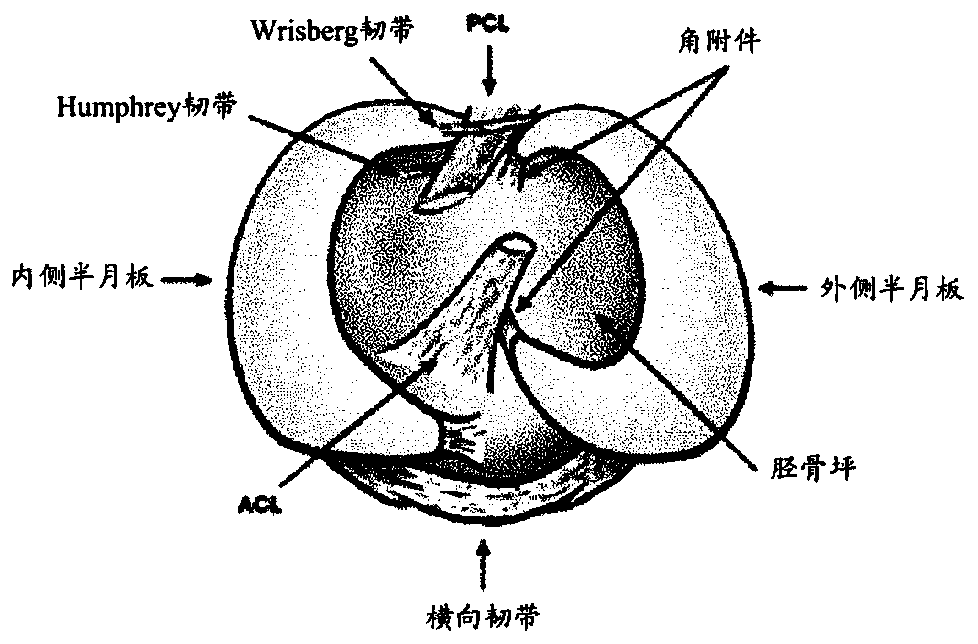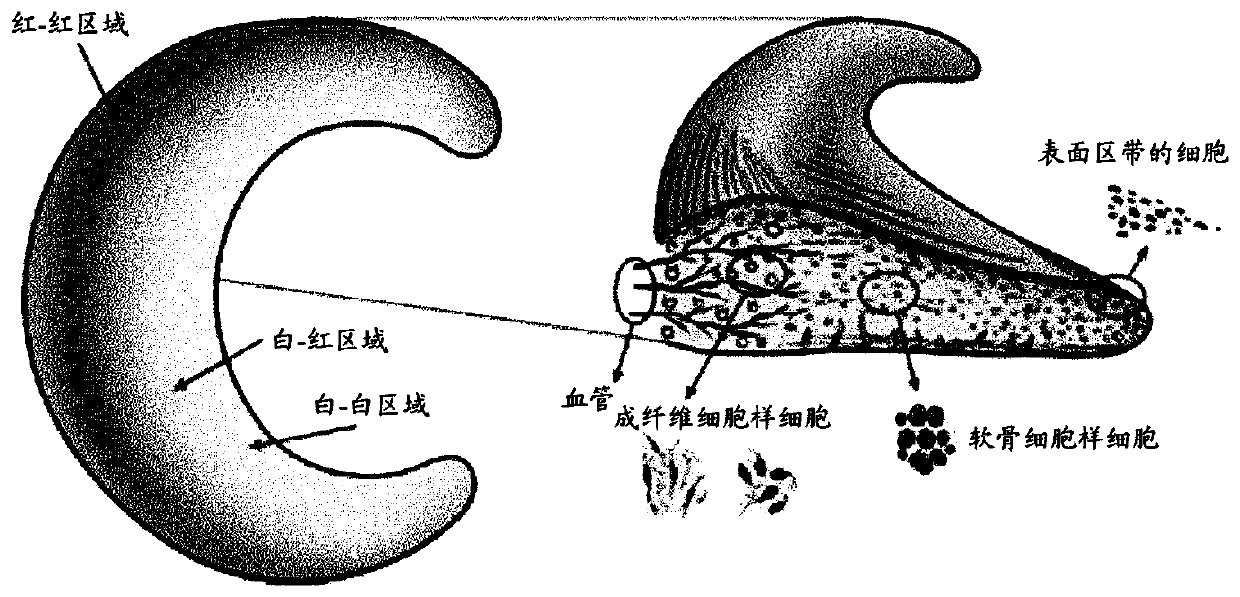Bioprinted meniscus implant and methods of using same
A bioprinter and implant technology, applied in the direction of joint implants, joint implants, 3D printing, etc., can solve the problem of unsatisfactory structural integrity and printing fidelity, and physiological compatibility Sexuality and cell viability, decreased cell viability, etc.
- Summary
- Abstract
- Description
- Claims
- Application Information
AI Technical Summary
Problems solved by technology
Method used
Image
Examples
Embodiment Construction
[0050] Aspects of the invention include synthetic tissue structures comprising one or more layers deposited by a bioprinter, wherein each layer comprises one or more synthetic tissue fibers comprising, optionally comprising cells, and A solidified biocompatible matrix optionally comprising one or more active agents, wherein at least one of matrix material, cell type, cell density, and / or amount of active agent varies in at least one direction within the layer. Preferably, at least one of said layers comprises a single continuous synthetic tissue fiber of variable composition dispensed from a bioprinter. The term "cured" as used herein refers to the solid or semi-solid state of a material that maintains its shape fidelity and structural integrity after deposition. The term "shape fidelity" as used herein means the ability of a material to maintain its three-dimensional shape. In some embodiments, the cured material is capable of maintaining its three-dimensional shape for a pe...
PUM
| Property | Measurement | Unit |
|---|---|---|
| diameter | aaaaa | aaaaa |
| elastic modulus | aaaaa | aaaaa |
| length | aaaaa | aaaaa |
Abstract
Description
Claims
Application Information
 Login to View More
Login to View More - R&D
- Intellectual Property
- Life Sciences
- Materials
- Tech Scout
- Unparalleled Data Quality
- Higher Quality Content
- 60% Fewer Hallucinations
Browse by: Latest US Patents, China's latest patents, Technical Efficacy Thesaurus, Application Domain, Technology Topic, Popular Technical Reports.
© 2025 PatSnap. All rights reserved.Legal|Privacy policy|Modern Slavery Act Transparency Statement|Sitemap|About US| Contact US: help@patsnap.com



